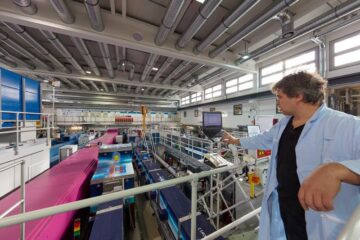CorA as anthelmintic – Natural product as antibiotic for the treatment of filariasis

Human filariasis (elephantiasis and river blindness) is caused by the nematodes W. bancrofti and O. volvulus, transmitted via blood sucking insects. The worms harbour the bacterial endosymbiont Wolbachia, which is essential for embryogenesis, larval development and adult worm survival.
Corallopyronin A (CorA) has efficacy against the intracellular Wolbachia of filarial nematodes. Experiments in mice show that all worms were depleted of more than 98% of their Wolbachia, resulting in blocked larval development and phenotypically altered worms. The results indicate the potential of CorA to effectively eliminate filarial disease by killing larvae as well as adult worms with one (maximum of two) treatment regimens. No toxicity against eukaryotic cells was detected. Preliminary pharmacokinetic data show that the antibiotic is amenable to oral administration. CorA is a non-competitive inhibitor of bacterial DNA-dependent RNA polymerase, with a different mode of action from rifampicin.
Weitere Informationen: PDF
PROvendis GmbH
Tel.: +49 (0)208/94105 10
Ansprechpartner
Dipl.-Ing. Alfred Schillert
Media Contact
Alle Nachrichten aus der Kategorie: Technologieangebote
Neueste Beiträge

Bakterien für klimaneutrale Chemikalien der Zukunft
Forschende an der ETH Zürich haben Bakterien im Labor so herangezüchtet, dass sie Methanol effizient verwerten können. Jetzt lässt sich der Stoffwechsel dieser Bakterien anzapfen, um wertvolle Produkte herzustellen, die…

Batterien: Heute die Materialien von morgen modellieren
Welche Faktoren bestimmen, wie schnell sich eine Batterie laden lässt? Dieser und weiteren Fragen gehen Forschende am Karlsruher Institut für Technologie (KIT) mit computergestützten Simulationen nach. Mikrostrukturmodelle tragen dazu bei,…

Porosität von Sedimentgestein mit Neutronen untersucht
Forschung am FRM II zu geologischen Lagerstätten. Dauerhafte unterirdische Lagerung von CO2 Poren so klein wie Bakterien Porenmessung mit Neutronen auf den Nanometer genau Ob Sedimentgesteine fossile Kohlenwasserstoffe speichern können…

















